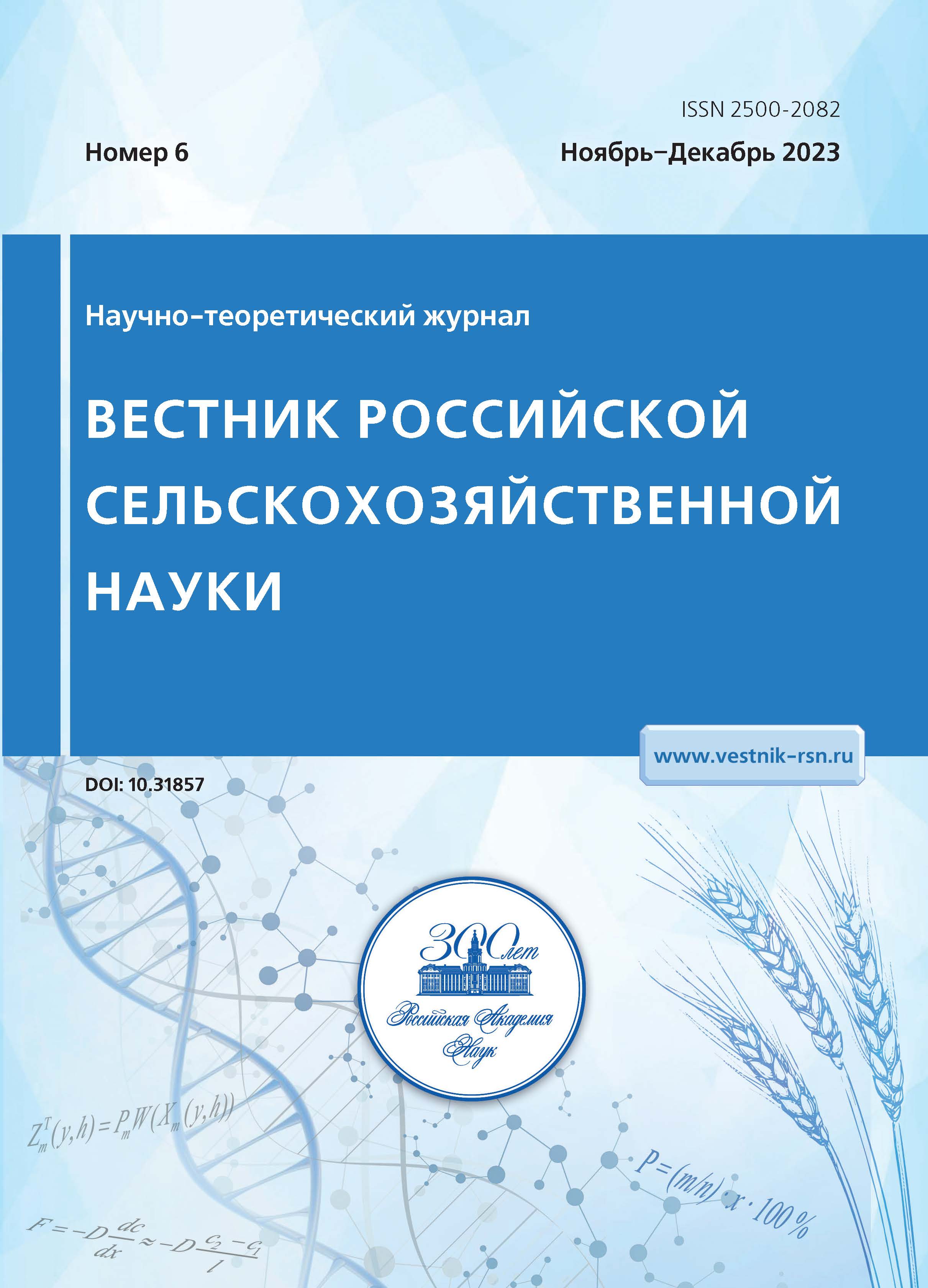Productivity and fatty acid composition of broiler chickens blood serum when fed bile
- 作者: Ryazantseva K.V1, Sizova E.A1, Nechitailo K.S1
-
隶属关系:
- Federal Research Centre of Biological Systems and Agrotechnologies of the Russian Academy of Sciences
- 期: 编号 6 (2023)
- 页面: 87-90
- 栏目: ARTICLES
- URL: https://jdigitaldiagnostics.com/2500-2082/article/view/657194
- DOI: https://doi.org/10.31857/2500-2082/2023/6/87-90
- EDN: https://elibrary.ru/WQXHBD
- ID: 657194
如何引用文章
详细
With the rapid development of intensive poultry farming, fats and oils are widely used as the most effective high-energy feed ingredients. Bile acids are powerful "digestive surfactants" that aid in the emulsification and absorption of lipids, including fat-soluble vitamins. Cattle bile was added to the diet of broiler chickens of the experimental groups, group I - 0.05%, group II - 1%. In the blood serum, a significant decrease in palmitic FA (C16:0) is observed in experimental groups I and II, so the difference with the control was 2.9% (p<0.05) and 4% (p<0.05). Biochemical analysis of blood serum showed that with the introduction of bile in experimental groups I and II, there was a significant increase in cholesterol concentration of 15.1% (p<0.05) and 11.6% (p<0.05) relative to the control. The level of cholesterol in the blood may increase due to the high need of the body for the synthesis of bile salts. Analysis of the serum FA composition showed a significant decrease in palmitic FA (C16:0) observed in experimental groups I and II, so the difference with the control was 2.9% (p<0.05) and 4% (p<0.05), respectively. By the end of the experiment, the maximum live weight indicators were recorded in group II (1% bile), the difference with the control was 4.5%, respectively. Thus, additionally administered bile acids may affect the ability to transport cholesterol from peripheral tissues to the liver, as well as improve broiler growth performance by increasing the solubility and absorption of dietary fat and fat-soluble nutrients.
作者简介
K. Ryazantseva
Federal Research Centre of Biological Systems and Agrotechnologies of the Russian Academy of Sciences
Email: reger94@bk.ru
E. Sizova
Federal Research Centre of Biological Systems and Agrotechnologies of the Russian Academy of Sciences
K. Nechitailo
Federal Research Centre of Biological Systems and Agrotechnologies of the Russian Academy of Sciences
参考
- Егоров И.А., Манукян В.А., Ленкова Т.Н. и др. Под общей редакцией академиков РАН В.И. Фисинина и И.А. Егорова. Руководство по кормлению сельскохозяйственной птицы. Методическое пособие. М.: ЛИКА, 2019. 215 с.
- Сизова Е.А., Рязанцева К.В. Жиры и эмульгаторы в кормлении цыплят-бройлеров (обзор) // Сельскохозяйственная биология. 2022. Т.№ 4(57). С. 664-680. doi: 10.15389/agrobiology.2022.4.664rus.
- Alzawqari M.H., Al-Baadani H.H., Alhidary I.B. et al. Effect of taurine and bile acid supplementation and their interaction on performance, serum components, ileal viscosity and carcass characteristics of broiler chickens // South African Journal of Animal Science. 2016. Vol.46. No.4. PP. 448-457.
- Bontempo V., Comi M., Jiang X.R. et al. Evaluation of a synthetic emulsifier product supplementation on broiler chicks // Animal Feed Science and Technology. 2018. Vol.240. PP. 157-164. doi: 10.1016/j.anifeedsci.2018.04.010
- Crespo N, Esteve-Garcia E. Polyunsaturated fatty acids reduce insulin and very low density lipoprotein levels in broiler chickens. Poultry Science. 2003. Vol.82. No.7. PP.1134-9.
- Fébel H., Mezes M., Palfy T. et al. Effect of dietary fatty acid pattern on growth, body fat composition and antioxidant parameters in broilers // Journal of Animal Physiology and Animal Nutrition. 2008. Vol.92. No.3. РР. 369-376. doi: 10.1111/j.1439-0396.2008.00803.x
- Ge X., Wang A., Ying Z. et al. Effects of diets with different energy and bile acids levels on growth performance and lipid metabolism in broilers // Poultry Sci., 2018. Vol. 98. PP. 887-895.
- Hofmann A.F., Hagey L.R. Bile acids: chemistry, pathochemistry, biology, pathobiology, and therapeutics // Cellular and molecular life sciences: CMLS. 2008. Vol.65. No.16. PP. 2461-2483. doi: 10.1007/s00018-008-7568-6
- Krasnodebska-Depta A., Koncicki A. Physiological values of selected serum biochemical indices in broiler chickens // Medycyna Weterynaryjna. 2000. Vol.56. PP. 456-460
- Lefebvre P., Cariou B., Lien F. et al. Role of bile acids and bile acid receptors in metabolic regulation // Physiological reviews. 2009. Vol. 89. No.1. PP. 147-191. doi: 10.1152/physrev.00010.2008
- Parsaie S., Shariatmadari F., Zamiri M.J., Khajeh K. Influence of wheat-based diets supplemented with xylanase, bile acid, and antibiotics on performance, digestive tract measurements, and gut morphology of broilers compared with a maize-based diet // British Poultry Scienceю 2007. Vol. 48. PP. 594-600.
- Poureslami R., Raes K., Turchini G.M. et al. Effect of diet, sex and age on fatty acid metabolism in broiler chickens: n-3 and n-6 PUFA // The British journal of nutrition. 2010. Vol.104. No.2. PP. 189-197. doi: 10.1017/S0007114510000395
- Van Le H., Nguyen D.V., Vu Nguyen Q. et al. Fatty acid profiles of muscle, liver, heart and kidney of Australian prime lambs fed different polyunsaturated fatty acids enriched pellets in a feedlot system // Scientific Reports. Vol.9. No.1. PP.1238. doi: 10.1038/s41598-018-37956-y
- Zaefarian F., Abdollahi M.R., Cowieson A., Ravindran V. Avian liver: the forgotten organ // Animals. 2019. Vol. 9. No. 2. PP. 63.
补充文件









